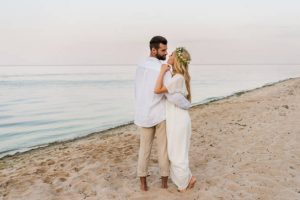The European violin was initially an imposition on Indigenous culture. But Aboriginal engagement with the violin cannot be exclusively seen as a means of cultural loss.
Reporting only the brutality and destruction caused by the British Empire in Australia would miss the way Indigenous Australians engaged, influenced, and rejected the forces of the empire.
My new research shows that Aboriginal violin players in Australia adapted the European violin for their cultural practices.
As an Aboriginal Violinist, I’ve always been fascinated by how Western instruments have been adapted into an expression of Indigenous culture and identity.
We can learn more about the way Aboriginal people responded to the interventions that occurred in their lives by studying how they played the violin.
Cultural continuation
In the 20th century, colonial governments in Australia made a concerted effort to “civilise” Aboriginal people. Many were isolated from society and placed on missions or reserves.
Missionaries regularly prohibited Aboriginals from practicing traditional customs and taught European activities. Aboriginals were taught Western music as a way to demonstrate civility and prepare for assimilation into white Australian society.
The New Norcia mission north of Perth was the first mission to use the violin to “civilise” Aboriginal people. It operated from 1848 to 1974.
A Spanish teacher with his Aboriginal students at the Mission in New Norcia, West Australia. 1896. Trove
Aboriginal people played the violin, even when it was not required. It does not mean that the “civilizing” mission was successful. Aboriginal people used music to create and preserve their individual, collective and cultural identities.
The individual used the violin.
Peter Jetta, a Nyungar born in 1872, lived at the New Norcia Mission. Jetta used his violin to express his traditional culture.
Peter Jetta photographed for the Western Mail in 1933. Trove
According to historian Anna Haebich, Jetta was a violinist who played for weddings, local dances, and Nyungar-only campfire gatherings.
She says that “old and new songs and dancing mingled together, reviving the flagging spirits and bringing healing joy to being together like they have for millennia.”
Jetta’s fusion music uses the violin to maintain and enhance a community-like feeling.
On missions, where traditional ways of life were largely removed, the need for community was even more acute. Indigenous culture is based on community and connection.
Read more: An Ode To My Grandmother: remaking the past using oral histories, theatre, and music.
An Aboriginal jazz band
The Singleton Argus, in 1933, published a report on the marriage of Robert Silva and Mildred BARTHOLOMEW. The couple lived at Yellow Rock Reserve, which is located at the foot of the Blue Mountains in Sydney.
An Aboriginal jazz band played locally made violins, banjos, steel guitars, and silk leaves.
This couple walking down to the wedding march as the musicians play a powerful example of how Western instruments have been incorporated into Aboriginal events and music on their terms.
Violins in a corroboree
In 1934, an article published in the Northern Champion describes a concert-corroboree held in Purfleet for the “townspeople” of the area. Many of the people in the audience are likely to have been white.
The first part of this program featured songs and native dances. This was followed by a corroboree that illustrated native lore. A gumleaf group and an orchestra concluded the program. The instruments were all homemade, including single-string fiddles from tea chests, violins made of tea boxes, and ukuleles.



